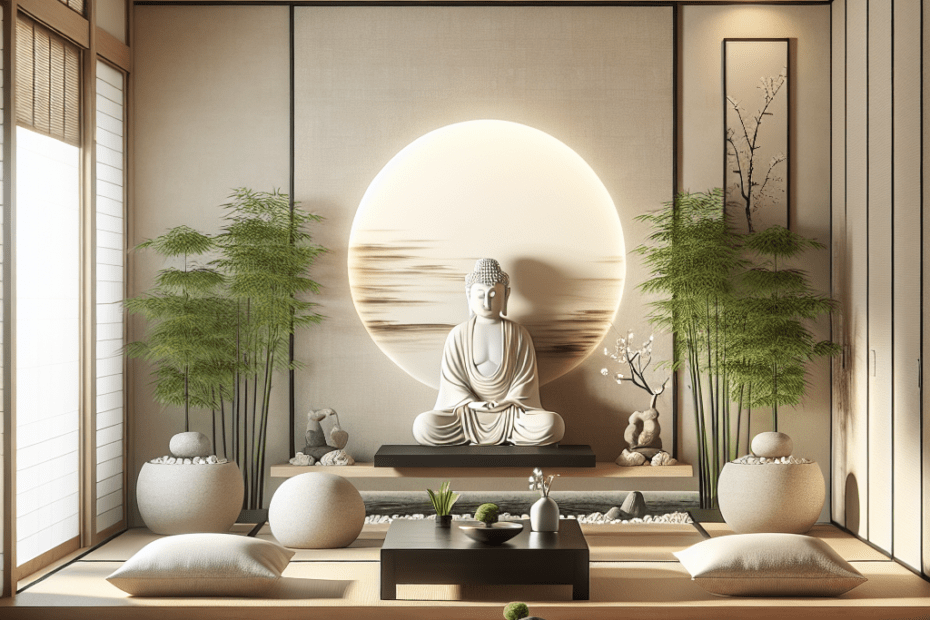“`html
Creating a Zen Living Room: The Path to Tranquil Living
When transforming their home into a sanctuary, many people often focus on the Zen Living Room idea. In today’s bustling world, having a space that oozes calmness and tranquility is essential for mental well-being. Embracing a Zen-inspired retreat at home not only enhances relaxation but also supports mindfulness.
Zen originates from Buddhist principles, emphasizing the art of simplicity and peace. This concept centers around creating harmony in spaces through minimalism, earthy colors, and natural elements. According to a study by the Environmental Protection Agency, 87% of people spend their time indoors. Hence, it’s crucial to make living spaces as calming and harmonious as possible.
Core Elements of a Zen Living Room
When designing a Zen living room, there are several key components to consider. These elements help ensure the design is cohesive and functional, aligning with Zen ideals.
| Element | Description |
|---|---|
| Natural Materials | Incorporates wood, stone, and bamboo to bring nature indoors. |
| Earthy Colors | Uses shades like beige, green, and brown to create warmth. |
| Minimalistic Décor | Reduces clutter by selecting only essential items. |
| Soft Lighting | Uses lamps and candles to enhance tranquility. |
| Indoor Plants | Adds life and purifies air, promoting a calming environment. |
Incorporating Natural Materials
Natural materials are a cornerstone of Zen design. By bringing in elements like wood, stone, and bamboo, homeowners can create a connection between the outdoor environment and their living room. This invocation of nature fosters a sense of peace and reduces stress. Wood flooring, stone accents, or bamboo curtains are excellent choices when considering how to introduce these elements effectively.
Using Earthy Colors
Color plays a pivotal role in influencing mood and atmosphere. In a Zen living room, it’s advisable to stick with a palette that comprises earth tones. Colors such as beige, sage green, and soft browns are ideal for creating warmth without overwhelming the senses. A spill of these hues on walls or furniture can enhance your space’s harmony, as they naturally promote relaxation.
Embracing Minimalism
A Zen-inspired room encourages simplicity and tidiness. Clutter is the antithesis of calm, and decluttering a space can significantly impact one’s ability to relax. When designing their room, they should choose furniture that is functional and complements space. Open spaces, clear surfaces, and useful items are the hallmarks of a serene environment.
Lighting for Ambiance
Lighting profoundly affects the ambience of a room. The goal in a Zen living room is to allow light to flow effortlessly, mimicking the natural progression of daylight. The use of soft lighting—through dim lamps, floor lamps, or candles—helps to create a soothing space. Gentle light can elevate a sense of comfort and warmth, promoting a meditative environment.
Add the Breath of Life: Indoor Plants
Plants are essential in a Zen living room, providing a sense of life and vitality. They have the added benefit of purifying the air, thereby improving overall well-being. Consider bringing in easy-to-care-for plants such as succulents, ferns, or peace lilies. According to research published by NASA, certain houseplants can significantly reduce indoor pollutants, enhancing the room’s healthfulness.
Benefits of a Zen Living Room
The profound advantages of adopting a Zen-inspired living room go beyond mere aesthetics. Here are some significant benefits:
- Improved Mood: The calming atmosphere can significantly enhance happiness.
- Increased Concentration: A clutter-free space can lead to better focus and productivity.
- Health Benefits: Reduced stress levels contribute to lower blood pressure and a stronger immune system.
Key Takeaways
- Zen living rooms focus on simplicity, minimalism, and natural elements to promote tranquility.
- Key elements include natural materials, earthy colors, minimalistic decor, soft lighting, and indoor plants.
- Emphasizing these aspects can improve mood, concentration, and overall health, making the living room a serene retreat.
Frequently Asked Questions (FAQ)
- Why are natural materials important in a Zen living room?
Natural materials, like wood and stone, create a direct connection to the earth, promote peace, and reduce stress.
- What are the best colors for a Zen living room?
Earth tones such as beige, sage green, and browns are ideal, as they are warm and promote relaxation.
- How can minimalism enhance a Zen space?
Minimalism reduces clutter, leading to a more organized and calming atmosphere.
- What types of lighting are best for a Zen living room?
Soft, diffused lighting using dimmable lamps or candles can create a relaxing ambience.
- Are indoor plants necessary for a Zen design?
Indoor plants add life and purify the air, which can contribute significantly to a calm and healthy living environment.
“`
